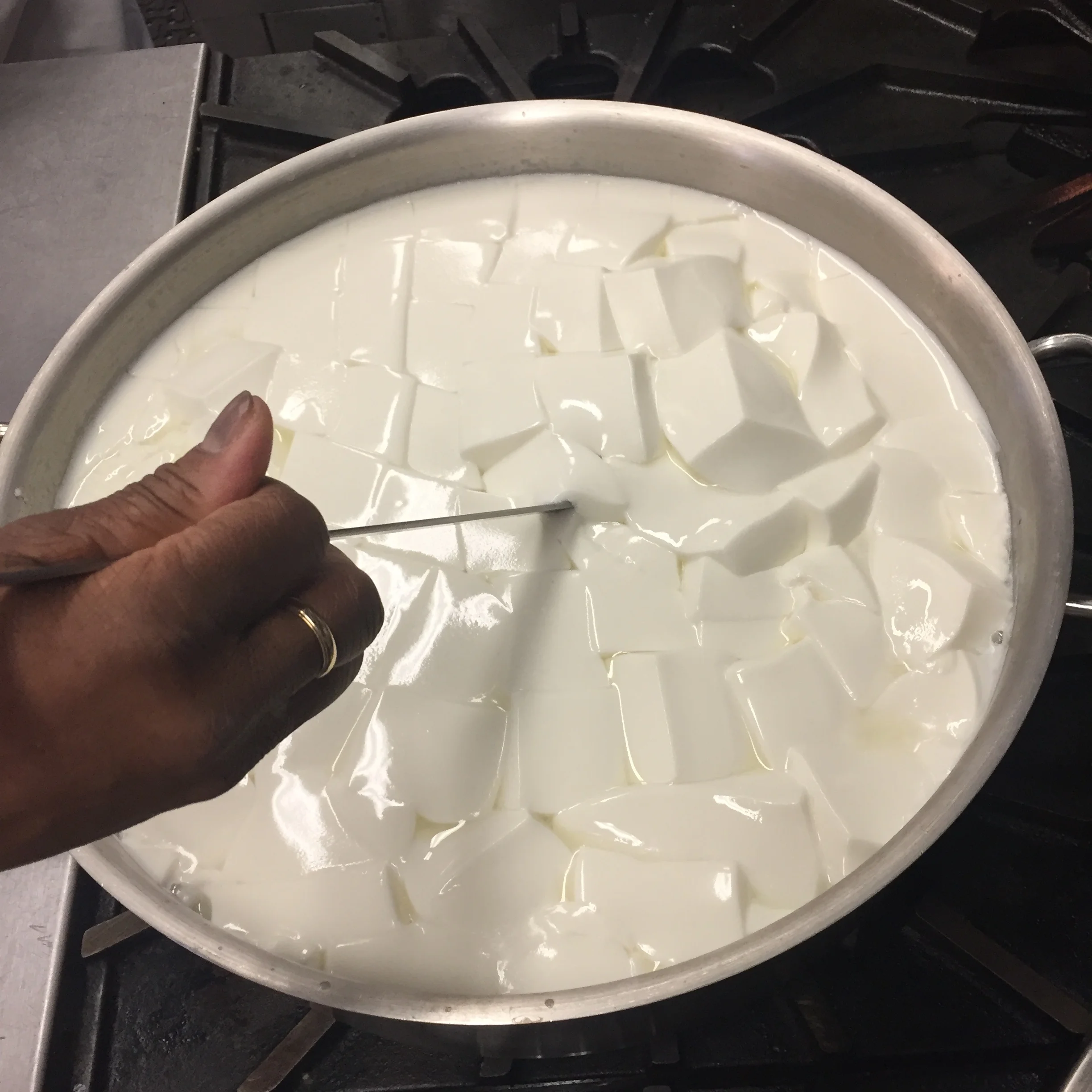Cheese
Cheese is most commonly prepared using cow’s milk and, to a lesser extent, sheep, goat, and water buffalo. It takes about 10 pounds of milk to produce one pound of cheese. Cheese is made by heating milk and adding certain types of bacteria that give it a distinct flavor. The bacteria used may naturally occur in milk but are usually introduced through starter cultures developed for specific types of cheese profiles. Rennet, a naturally occurring enzyme found in the lining of a calf’s stomach, is added to help coagulate the cheese. Today, most rennet, however, is made from plants. Rennet helps the casein proteins in milk bond and form an elastic curd.
Softer cheeses are heated less and aged less, while harder cheeses are heated to higher temperatures, which coagulate the proteins into tighter bonds. Aging also removes moisture, creating a harder cheese. Some cheeses are prepared to be consumed fresh, but most are ripened through aging in humidity and temperature-controlled conditions specific to their type. The length of aging can be anywhere from a few months to several years. There are at least 1000 varieties, but this number may be grossly underestimated as the explosion of artisanal cheese in recent years has created many new distinct and unique varieties to small cheese producers.
Cooking with Cheese
Cheese is best heated to lower temperatures as it can curdle in soups and sauces under prolonged, high temperatures. Cool the soup or sauce slightly and sprinkle the grated cheese with a whisk. If heated too high, the fat in cheese can separate, so starches such as flour help to stabilize cheese and absorb fats. Processed cheese food can also help stabilize cheese sauces because they contain emulsifiers. Some hard, dry cheeses will not melt and are used for adding texture and color to the surface. Mexican cheeses such as queso blanco and Italian hard-grating cheeses generally fit this description.





